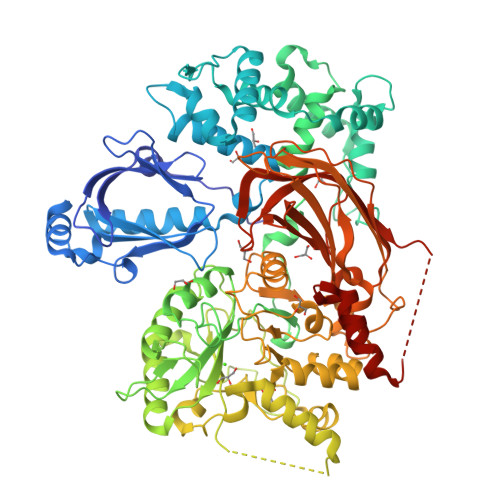An autoinhibitory helix in the C-terminal region of phospholipase C-beta mediates Galphaq activation.
Lyon, A.M., Tesmer, V.M., Dhamsania, V.D., Thal, D.M., Gutierrez, J., Chowdhury, S., Suddala, K.C., Northup, J.K., Tesmer, J.J.(2011) Nat Struct Mol Biol 18: 999-1005
- PubMed: 21822282
- DOI: https://doi.org/10.1038/nsmb.2095
- Primary Citation of Related Structures:
3QR0, 3QR1 - PubMed Abstract:
The enzyme phospholipase C-β (PLCβ) is a crucial regulator of intracellular calcium levels whose activity is controlled by heptahelical receptors that couple to members of the Gq family of heterotrimeric G proteins. We have determined atomic structures of two invertebrate homologs of PLCβ (PLC21) from cephalopod retina and identified a helix from the C-terminal regulatory region that interacts with a conserved surface of the catalytic core of the enzyme. Mutations designed to disrupt the analogous interaction in human PLCβ3 considerably increase basal activity and diminish stimulation by Gαq. Gαq binding requires displacement of the autoinhibitory helix from the catalytic core, thus providing an allosteric mechanism for activation of PLCβ.
Organizational Affiliation:
Life Sciences Institute, Department of Biophysics, University of Michigan, Ann Arbor, Michigan, USA.


















